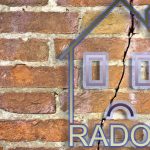What Is Ground Gas Protection?
Protecting your home, property or structure is fundamental to preventing serious harm to occupants. Gas protection is a technical solution to control and prevent the penetration of gas. Ground gas protection systems are designed to reduce the risk caused by hazardous gases and to prevent harm.
What Ground Gases Are Dangerous To Homes And Structures
Hydrocarbons:
As derivations of the fuel industry, hydrocarbons are variations of fuel created through the petrol chemistry industry in order to create fuel. These hydrocarbons are very toxic and have the potential to cause cancer as well as some other illnesses.
Methane:
A very dangerous gas due to being odourless and highly flammable. Methane is volatile and highly explosive when released into the atmosphere, even at low levels.
Methane is a product of the degradation of organic substances in the ground. This includes landfill sites, sewage treatment areas, peat bogs and mining operations. Methane is a very dangerous issue and you should contact the authorities immediately if you believe there may be an issue in your home.
Carbon Dioxide:
Another odourless gas, carbon dioxide is very toxic and a by-product of landfills and the like. In particularly high concentrations, carbon dioxide or C02 can cause serious issues to your health.
At 3% concentration, C02 can cause headaches and shortness of breath that can lead to asphyxiation. Anything above 5% concentration and much more serious health risks become apparent such as suffocation.
Radon:
Naturally occurring in the environment, Radon is colourless, odourless and tasteless. It is also radioactive which can cause serious health implications. If a property is built over a radon source, it can migrate into the property. If left to accumulate it can vastly increase the possibility of lung cancer for the homeowners. According to WHO in 2009, Radon was the cause of 15% of lung cancer cases worldwide. This is why radon should be taken seriously and monitored carefully.
What Are Volatile Organic Compounds?
Volatile Organic Compounds (VOC’s) are compounds that volatize under normal atmospheric conditions to become vapour.
VOC’s contain hydrogen, fluorine, bromine, sulphur, nitrogen, oxygen and carbon. More common VOCs that are encountered on industrial building sites are; petroleum, benzene and many more. They can react in the air with oxides to form nitrogen.
How To Protect Buildings On Contaminated Land
We are a registered installer of Memtech ground gas protection membranes and venting systems. These systems are critical for the development of construction sites where ground gas has been identified. For more information, contact us today.



